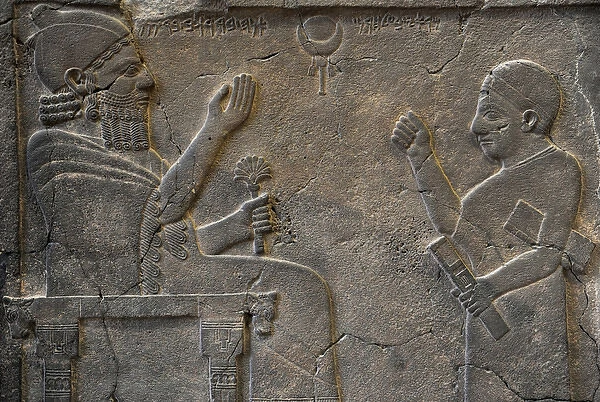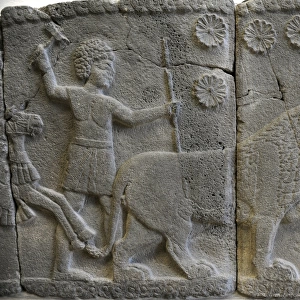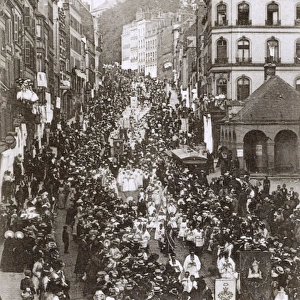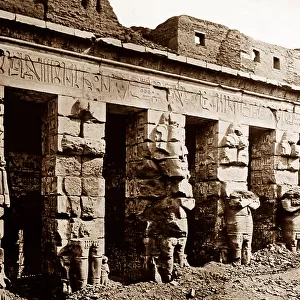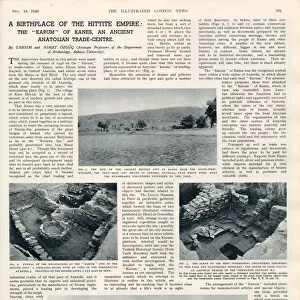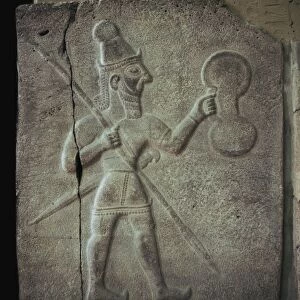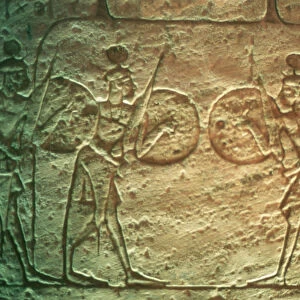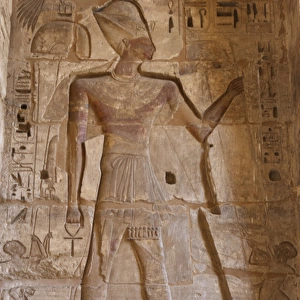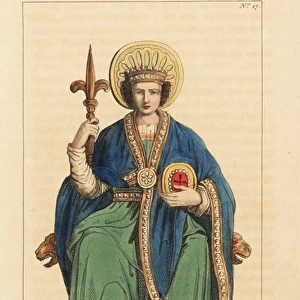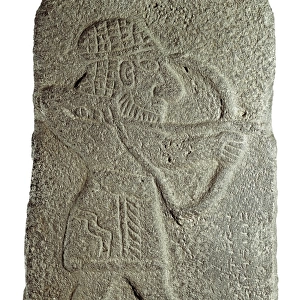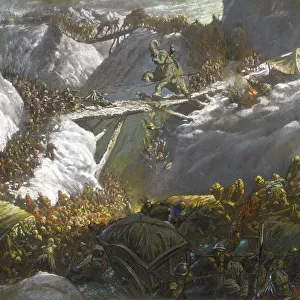Home > Europe > Germany > Berlin
Hittite art. Stele of King Bar-Rakib (744-727 BC) sitting o
![]()

Wall Art and Photo Gifts from Mary Evans Picture Library
Hittite art. Stele of King Bar-Rakib (744-727 BC) sitting o
Hittite art. Orthostat or stele of King Bar-Rakib (Barrakit 744-727 BC) sitting on the throne.750 BC. Zone of Sma al /Zincirli (Turkey) to South of Turkey. Detail. Pergamon Museum. Museum Island. Berlin. Germany
Mary Evans Picture Library makes available wonderful images created for people to enjoy over the centuries
Media ID 14332160
© Thaliastock / Mary Evans
Alphabet Anatolian Antique Aramaic Aramean Basalt Blackboard Carved Civilization Curly Functionary Hittite Hittites Inscription Language Minor Monarch Monarchy Moon Official Orthostat Pergamon Script Aramaean
FEATURES IN THESE COLLECTIONS
> Asia
> Turkey
> Turkey Heritage Sites
> Pergamon and its Multi-Layered Cultural
> Historic
> Ancient civilizations
EDITORS COMMENTS
This orthostat or stele, dating back to the 8th century BC, showcases the regal presence of King Bar-Rakib, also known as Barrakit, of the Hittite Empire (744-727 BC). The monarch is depicted sitting on a throne, his curly beard and flowing robes adorned with intricate patterns. The stele, carved from basalt, was discovered in the ancient city of Zincirli, located in the southern region of Turkey. The inscription on the stele is written in the Aramaic language and script, which was widely used in the ancient Near East during this period. The Aramaic alphabet, an early form of the Phoenician alphabet, is considered a precursor to the Greek and Latin alphabets. The inscription on the stele is believed to detail the functions and duties of various officials within the Hittite monarchy. The king is shown holding a scepter in one hand and a bowl or cup in the other, possibly symbolizing his power and authority. The throne is adorned with various symbols and motifs, including the crescent moon, which may represent the god Waxwan or the moon god Sin, who was an important deity in the Hittite pantheon. This remarkable artifact is now on display at the Pergamon Museum on Museum Island in Berlin, Germany, where it continues to captivate visitors with its intricate details and historical significance. The stele is a testament to the rich cultural heritage of the ancient Hittite civilization and the artistic achievements of the ancient world.
MADE IN AUSTRALIA
Safe Shipping with 30 Day Money Back Guarantee
FREE PERSONALISATION*
We are proud to offer a range of customisation features including Personalised Captions, Color Filters and Picture Zoom Tools
SECURE PAYMENTS
We happily accept a wide range of payment options so you can pay for the things you need in the way that is most convenient for you
* Options may vary by product and licensing agreement. Zoomed Pictures can be adjusted in the Cart.

